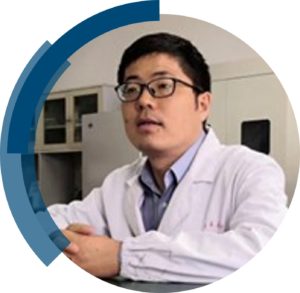We are excited to share the success of Bin Wang’s first-time independent article in ChemComm; ‘tert-Butyl nitrite triggered radical cascade reaction for synthesizing isoxazoles by a one-pot multicomponent strategy‘ included in the full milestones collection.
Read our interview with Bin below.
What are the main areas of research in your lab and what motivated you to take this direction?
Our laboratory currently focuses on the glycosylation reaction of nitrogen-containing heterocycles to acquire drug-like molecules. Many bioactive components in traditional Chinese medicine (TCM) contain glycosyl groups, which increase the water solubility of these molecules. According to the decoction method used in TCM, these compounds are more likely to be the active components of TCM. Additionally, in the development of synthetic drugs, glycosyl groups are often introduced into poorly soluble lead compounds to increase their hydrophilicity, improve the bioavailability of the target drugs, and finally increase the potential druggability.
Can you set this article in a wider context?
As early as 1888, the synthesis of isoxazole derivatives was first documented through the condensation/cyclization reaction of 1,3-dicarbonyl compounds with hydroxylamine by Claisen. Subsequently, two typical strategies for the synthesis of isoxazoles involve 1,3-dipolar cycloaddition of nitrile oxides; and alkynes and cyclo-isomerization of alkynyl ketoxime compounds.
In this article, we describe a novel and efficient multicomponent cascade reaction that involves sequential acylation/oximation/annulation processes in the presence of alkenes, aldehydes, TBN, and H2O, providing access to diversely disubstituted isoxazoles in one-pot. This strategy features H2O as a rare oxygen source of the isoxazole ring, commercially available substrates, and the construction of diverse new bonds in a single pot, which is distinct from already reported studies. These characteristics meet exactly the needs of environmental protection.
Additionally, we applied the established method to provide 32 isoxazole derivatives, and antioxidant experiments showed that these compounds have positive radical scavenging capacity, especially isoxazole 4al reaching 60% scavenging power at a concentration of 2 μmol/mL, suggesting that these molecules could be utilized as lead compounds for anti-aging drugs.
What do you hope your lab can achieve in the coming year?
In the next year, we will focus on carbohydrate chemistry, especially around the glycosylation reaction to achieve the synthesis of antioxidant and/or anti-inflammatory substances.
Describe your journey to becoming an independent researcher.
After completing my master’s degree in physical chemistry (Hunan University, China), I pursued a Ph.D. in organic chemistry for synthesis methodology to explore the functionalization of alkenes or alkynes in the aqueous phase. (University of Science and Technology of China, China), followed by an Associate Professor position focused on the synthesis of nitrogen-containing heterocycles to acquire drug-like molecules (Anhui University of Chinese Medicine, China). Subsequently, I accepted a visiting scholar position from the Georg-August-University of Goettingen, working on glycosylation reactions. Currently, my research group consists of 1 Ph.D. student, 7 masters, and 9 undergraduates. Inspired by the experiences described above and with an interest in exploring TCMs, I begin my independent career to navigate new fields between nitrogen-containing heterocycles and carbohydrate chemistry.
What is the best piece of advice you have ever been give?
“Do important and useful chemistry”. Innovation and practicality could go hand in hand. The application of chemical synthesis to solve problems in social life is more in agreement with the needs of human development, for instance, the total synthesis of natural products, synthesizing drug molecules, etc. Therefore, in the course of my academic research, this word has been guiding and inspiring me.
Why did you choose to publish in ChemComm?
ChemComm is a highly readable journal. The novelty of the published paper and the rapid publication process attracted me deeply to publish my first research article.
Explore more ChemComm Milestones news and updates on our Twitter: @ChemCommun











